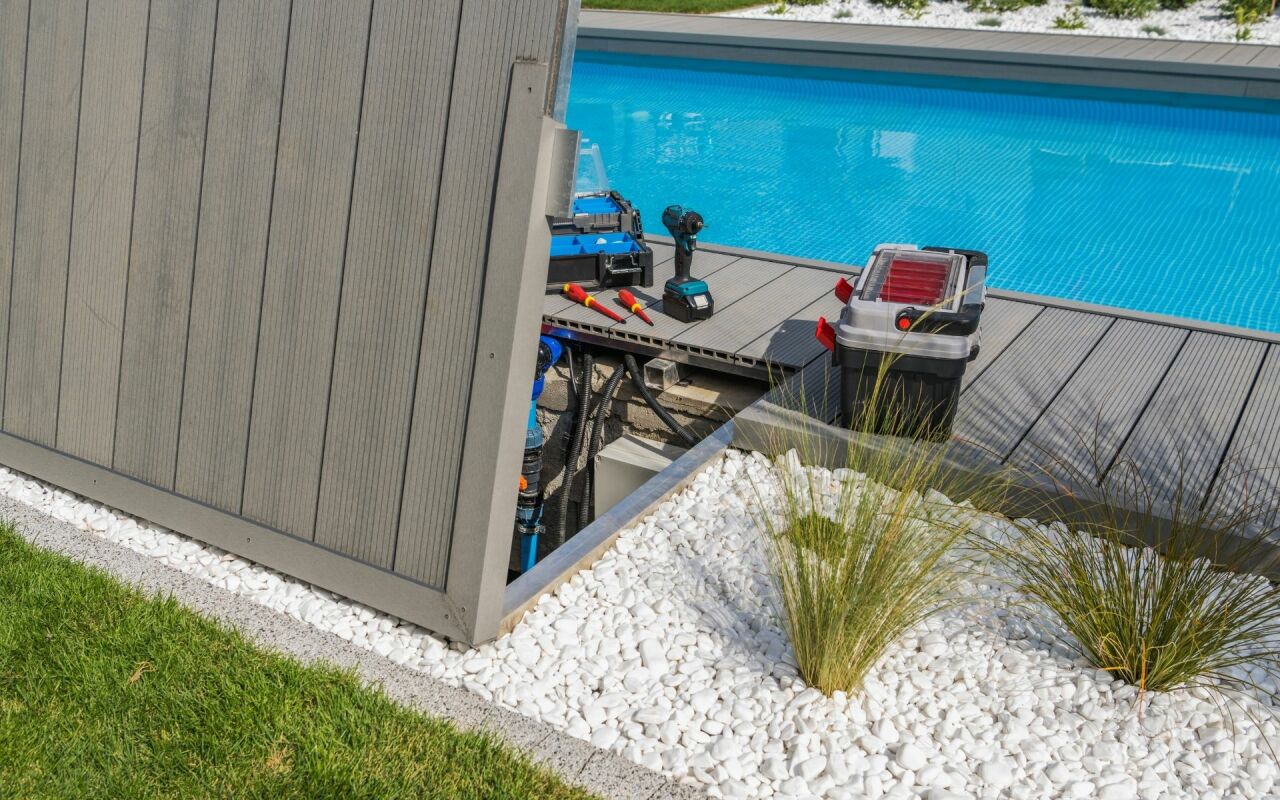Havuz Pompası Çeşitleri Ve Fiyatları

Havuz Pompası Çeşitleri Ve Fiyatları
Havuz pompası havuzun sirkülasyonunu sağlayan ve temiz kalmasını sağlayan önemli bir cihazdır. Havuz pompası çeşitleri farklı havuz boyutlarına ve kullanım ihtiyaçlarına göre değişmektedir. Aşağıda farklı havuz pompası modelleri ve genel fiyatları hakkında bilgi bulabilirsiniz:
Havuz pompası ürünleri ve fiyatlarını görmek için tıklayınız
Tek devirli pompalar: Bu tip pompalar sabit devirde çalışan temel modellerdir. Genellikle küçük ve orta büyüklükteki havuzlar için uygundur. Tek hızlı pompalar genellikle ucuzdur ve 200$ ile 600$ arasında değişir.
İki hızlı pompalar: İki hızlı pompalar, düşük hızlı ve yüksek hızlı pompalardır. Düşük hız enerji tasarrufu sağlar ve günlük sirkülasyon için kullanılabilirken, yüksek hız temizlik gibi daha yoğun kullanımlar için uygundur. İki hızlı pompaların maliyeti genellikle 400 ila 800 dolar arasındadır.
Değişken Hızlı Pompalar: Bu pompalar, enerji verimliliğini en üst düzeye çıkarmak için hızını otomatik olarak ayarlayabilen gelişmiş modellerdir. Değişken hızlı pompalar farklı çalışma modlarına sahip olabilir ve kullanım ihtiyaçlarına göre programlanabilir. Değişken hızlı pompaların fiyatı tipik olarak 800 ila 1.500 ABD Doları arasında değişir.
Fiyatlar marka, model, güç, özellikler ve satın alındığı yer gibi faktörlere göre değişiklik gösterebilir. Ayrıca kurulum ve bakım masrafları fiyata eklenmelidir. Havuz pompası satın alırken ihtiyacınıza uygun modeli seçmeniz önemlidir. Doğru pompayı seçerken havuzun büyüklüğünü, su miktarını, kullanım yoğunluğunu ve enerji verimliliğini göz önünde bulundurmalısınız. Garanti, bakım ve yedek parça bulunabilirliği gibi faktörlerin de değerlendirilmesi önemlidir.
Havuz Motoru Çok Elektrik Yakar Mı?
Havuz motorunun güç tüketimi örneğin kullanılan motorun gücüne, çalışma süresine, pompanın hızına ve havuzun büyüklüğüne göre değişir. Ancak genel olarak havuz motorları evdeki diğer elektrikli aletlere göre daha fazla elektrik tüketebilir.
Havuz motorunun elektrik tüketimini etkileyen en önemli faktörler şunlardır:
Motor gücü: verimli bir motor daha fazla elektrik tüketir. Havuzun büyüklüğüne ve su miktarına bağlı olarak uygun motor gücünün seçilmesi önemlidir. Gerekenden daha fazla güce sahip bir motor kullanmak gereksiz enerji tüketimine neden olabilir. Çalışma süresi: Havuz motorunun çalışma süresi de elektrik tüketimini etkiler. Havuz motorları tipik olarak günde 6-8 saat çalışır. Havuzun büyüklüğüne, kullanım yoğunluğuna ve suyu temiz tutma ihtiyacına göre bu süre değişebilir.
Pompa hızı: havuz motorlu bazı modellerde hız ayarlanabilir. Hızlı pompa daha fazla elektrik tüketir, yavaş pompa enerji tasarrufu sağlar. İhtiyaçlarınıza ve kullanım alışkanlıklarınıza göre uygun pompa devrini seçmek önemlidir.
Havuzun büyüklüğü ve özellikleri: Havuzun büyüklüğü, su miktarı ve arıtılacak suyun özellikleri de elektrik tüketimini etkileyen faktörlerdir. Büyük bir havuz, daha fazla suyun sirkülasyonu ve temizlenmesi için daha verimli bir pompa gerektirebilir, bu da daha fazla elektrik tüketimi anlamına gelir.
Aşağıdaki önlemleri alarak enerji tasarrufu yapabilirsiniz:
Pompa devrini düşük seviyede kullanmak veya gerektiğinde yüksek devire geçmek. Pompanın çalışma süresinin optimize edilmesi ve gereksiz yere uzun çalışma sürelerinin önlenmesi. Pompanın düzenli bakımını yaparak verimini arttırmak. Enerji tasarruflu pompa modellerini tercih edin. Bu nedenle, havuz motorunun güç tüketimi birkaç faktöre bağlıdır ve kullanıcı tarafından kontrol edilen değişkenler tarafından kontrol edilebilir. Doğru motor seçimi, uygun çalışma süresi ve enerji tasarrufu önlemleri ile havuz motorunun elektrik tüketimini optimize edebilirsiniz.
Havuz Kaç Saatte Isınır?
Bir havuzu ısıtmak için gereken süre birçok faktöre bağlıdır ve net bir cevap vermek zor olabilir. Bir havuzu ısıtmak için gereken süreyi etkileyen bazı faktörler şunlardır:
Havuzun büyüklüğü: Havuzun hacmi ısıtma süresini etkileyen en önemli faktörlerden biridir. Daha küçük bir havuz daha hızlı ısınırken, daha büyük bir havuz daha uzun sürebilir.
Isı kaynağı: Havuzu ısıtmak için kullanılan ısı kaynağı da önemlidir. En yaygın ısı kaynakları güneş enerjisi, doğal gaz, elektrikli ısıtıcılar veya ısı pompalarıdır. Her ısı kaynağının ısıtma süresi farklı olabilir.
Çevresel Faktörler: Hava sıcaklığı, güneş ışığı ve çevre koşulları gibi faktörler de ısıtma süresini etkiler. Sıcak bir iklimde veya güneşli bir günde havuz daha hızlı ısınabilirken, soğuk veya bulutlu havalarda havuzun ısınması gecikebilir.
Yalıtım: İyi yalıtılmış bir havuz, ısınma süresini etkileyebilir. İyi yalıtılmış bir havuz daha az ısı kaybeder ve bu nedenle daha hızlı ısınır. Yukarıdaki faktörler göz önüne alındığında tipik bir havuzun ısıtma süresi genel olarak 24 ile 72 saat arasında değişebilmektedir. Ancak bu süre havuzun özelliklerine, ısı kaynağına ve çevre koşullarına göre değişebilir.
Havuzu daha hızlı ısıtmak için aşağıdaki yöntemleri deneyebilirsiniz:
Havuzun güneş enerjisinden yararlanabilmesi için güneş ışığı alan bir yerde bulunduğundan emin olun. Isı kaynağının daha verimli kullanılması için yalıtımın iyileştirilmesi. Enerji verimliliği yüksek ısıtma sistemlerini öneriyoruz. Geceleri ısı kaybını önlemek için bir havuz kullanın. Bu şekilde havuzun ısıtma süresini kısaltabilirsiniz ancak havuzun özelliklerini ve kullanılan ısıtma sisteminin türünü dikkate almak doğru süreyi belirlemek için önemlidir.
Havuz Isıtma Sistemleri ürünlerini ve fiyatlarını görmek için tıklayınız.
Kışın Havuz Suyu Kaç Derece Olmalı?
Kış aylarında havuzun su sıcaklığı tercihlere göre değişiklik gösterebilmektedir. Ama genel olarak havuzun su sıcaklığı kışın genellikle 10-15 derecelerde tutulur. Bu sıcaklık, suyun donmasını önlemek ve donmasını ve havuzun zarar görmesini önlemek için yeterlidir.
Kış aylarında bu alanda havuz suyu sıcaklığının korunmasının avantajları şunlardır:
Donmayı Önleyin: Havuz suyu sıcaklığının 10-15 derece arasında tutulması suyun donmasını engeller, bu da havuzun donma ve hasar görme riskini azaltır.
Enerji tasarrufu: Suyu daha yüksek bir sıcaklıkta tutmak enerji tüketimini artırır. Kış aylarında su sıcaklığını daha düşük tutarak enerji maliyetlerinden tasarruf edebilirsiniz.
Su kalitesi: Düşük sıcaklıklarda su, bakteri ve alglerin büyümesi için uygun değildir. Bu nedenle, suyu daha düşük bir sıcaklıkta tutarak su kalitesini korumak daha kolay olabilir.
Havuz suyu sıcaklığı istenirse ayarlanabilir ancak havuzun donmaması için önerilen sıcaklık 10-15 santigrat derecedir. Ayrıca havuzun kullanım amacı ve kişisel tercihleriniz de sıcaklık ayarlarını etkileyebilir.
